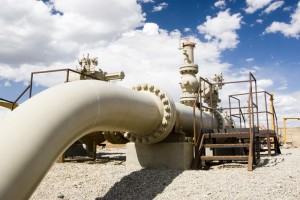- Energy Technologies
- Energy Technologies
- Grid Infrastructure
- Diesel
Natural Gas Generation Displacing Diesel in India

Recent developments indicate that natural gas power generation is set to displace growing amounts of diesel in India. Though natural gas represents just 8% of installed capacity, demand is set to more than triple in the 2012-2030 timeframe according to Indian government forecasts. While some of the extra supply will come from increased domestic production, much will come from the doubling of liquefied natural gas (LNG) import capacity through 2025. At the same time, local distribution piping is expanding its reach—one customer at a time.
Natural gas is becoming more attractive for a number of reasons. One is cost; although diesel and coal are both relatively inexpensive and heavily relied on for power, the increased natural gas supplies are expected to bring prices down. The globalization of Asian LNG markets should also bring more stability to gas prices as the fuel moves away from oil indexation to more market-based pricing in Asia. Perhaps more importantly, natural gas has significantly lower emissions than diesel and coal when used for power generation—measured via particulate emissions and greenhouse gases. Alongside renewables, natural gas is seen as a key tool in fighting air pollution in India, which has half of the world’s 20 worst polluted cities.
Diesel generators are one key cause for pollution. Diesels are chosen because they are cheap, fuel is readily available, and they can be relied on to operate when India’s relatively poor grid goes down. (According to the World Economic Forum, India ranks just above the bottom third in quality of electricity supply, though this ranking is slowly improving.) Diesel gensets are ubiquitous in India, with an estimated 90 GW of diesel generators as of 2014 and about 4% of all consumed diesel going to gensets. There is a drive for renewables to displace much of this diesel use, and they are well-positioned to do so due to falling prices of technologies like PV. But where natural gas becomes available, it may often be the preferred choice, especially where reliable power is needed after the sun stops shining.
Proactive Outreach
Diesel remains the de facto choice as a reliable and established solution for residential, commercial, and industrial customers alike. Thus, for distributed natural gas to thrive in India, proactive outreach is required. These companies have recently made headlines with moves in distributed natural gas:
- Indraprastha Gas Ltd., a gas supplier in Delhi, recently pitched gas gensets to housing complexes and factories as a cost-saving measure. The company says natural gas generation can offer power at 12 Rs/kWh ($0.18) compared to diesel 18 Rs/kWh ($0.27). The company is also in talks to provide electricity as a service.
- Last year, fuel cell maker Bloom Energy announced a partnership with state-owned GAIL, India’s leading natural gas company. An initial project was announced in Bangalore, presumably with many more to come.
- Dual-fuel gensets or conversions may also be an attractive option. Genset manufacturers like Caterpillar and Cummins offer gensets or retrofit kits that allow compression-ignited diesel generators to displace half or more of their fuel with natural gas. As natural gas distribution expands, this trend is expected to spread.
As these and other value chain players find new opportunities to supply power or generation equipment, more natural gas infrastructure may follow in India. In this under-electrified growing economy that represents 17% of the world’s population, massive opportunity beckons to the prepared.